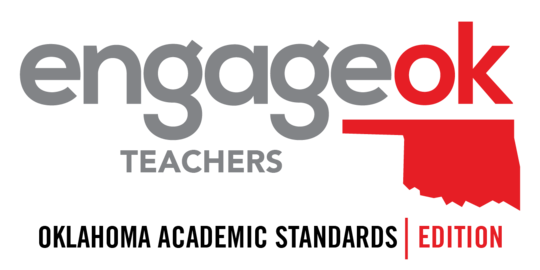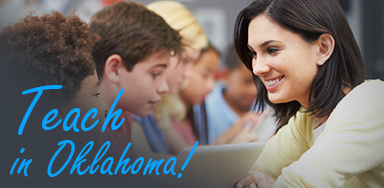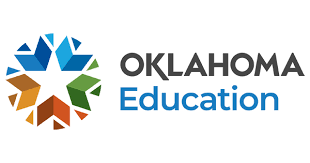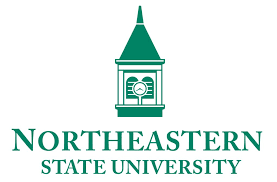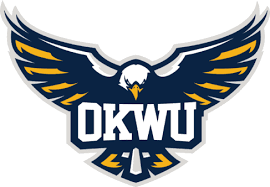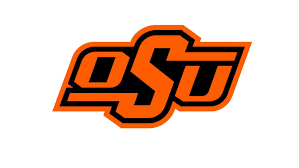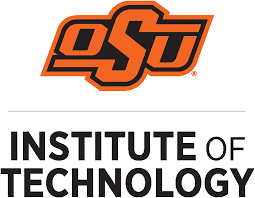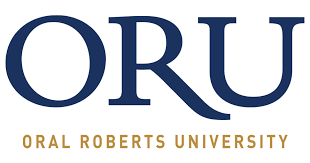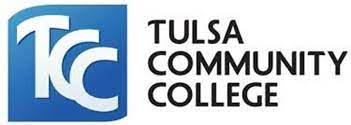Oklahoma Academic Standards
Oklahoma Academic Standards serve as expectations for what students should know and be able to do by the end of the school year. Teaching standards can be useful tool in your child's success.
- English Language Arts (OSTP: Grades 3-8, and CCRA Grade 11) (2021 Standards will begin to be assessed in Spring 2024)
- Mathematics (OSTP: Grades 3-8, and CCRA Grade 11) (2022 Standards will begin to be assessed in Spring 2024)
- Science (OSTP: Grades 5, 8, and CCRA Grade 11)
- Social Studies (High School American History Grades 10-12)
- Fine Arts (Credit(s) required for graduation)
- Personal Financial Literacy (Competencies required for graduation)
- World Languages (Credit(s) required for graduation)
- Health Education (No state assessment)
- Physical Education (No state assessment)
- Information Literacy (No state assessment)
- Education Technology integrated (No state assessment)
- Computer Science (No state Assessment)
OSTP - Oklahoma School Testing Program
CCRA - College- and Career-Readiness Assessment
Oklahoma Curriculum Frameworks (Mathematics, English Language Arts, Science, and Social Studies)
The OSDE curriculum frameworks are sets of curricular resources developed by Oklahoma teachers to help educators translate the Oklahoma Academic Standards into classroom practice. They illustrate what is expected of students at each grade level by examining the intent of each standard and providing instructional options to support student learning.
The Oklahoma State Textbook Committee reviews all instructional materials for the state's public schools in regards to the state content standards.
Oklahoma Family Guides
You are your child’s first teacher and a critical partner in their learning. To help you support your child in the classroom, the Oklahoma State Department of Education (OSDE) has produced Oklahoma Family Guides. These handy, printable flyers include helpful information aligned to the Oklahoma Academic Standards (what students know and should be able to do in each grade and course) and guidance on how to support student learning at home. Guides are available for Pre-K through 6th-grade students in the following subjects: English language arts, mathematics, science, social studies, health, music, physical education (PE), visual art, and artificial intelligence. The information in the guides is a snapshot of learning in each of these grades and school subjects. For complete sets of academic standards, visit the Oklahoma Academic Standards webpage. Thank you for all you do to help your child be successful in the classroom!
Oklahoma Teacher Certification
The Teacher Certification office ensures that educators are properly credentialed and provides technical assistance to school districts, teachers, and college administrators regarding certification. The State Department of Education also has information on Emergency Teacher Certification.
Learn how to receive a teacher certification, renew your certification, and more.
Data & Statistics
- Oklahoma Education Facts from the Oklahoma State School Boards Association provides enrollment, spending, staffing information, and more.
- Oklahoma State Department of Education Open Records include student count, performance, workforce, and historical data.
- Please note there is a link on this page to a Public Records page that just links back to the OSDE homepage.
- Please note there is a link on this page to a Public Records page that just links back to the OSDE homepage.
- Oklahoma School Report Cards rate how public schools across Oklahoma are serving students.
Broken Arrow Public Schools Virtual Options
Hybrid Schools
Broken Arrow Virtual Academy offers students across Oklahoma the best of both worlds—flexible online learning combined with supportive in-person opportunities. Our hybrid model empowers students to thrive academically while staying connected to teachers, peers, and resources that help them succeed. Broken Arrow Virtual Academy welcomes out-of-district transfers, requires in-person assessments, and encourages students to take advantage of our on-site support.
Virtual Academy
Broken Arrow Virtual Academy can partner with Oklahoma families who might choose to homeschool, providing a flexible hybrid model that enhances learning at home. By enrolling, parents and guardians gain access to certified teachers, proven curriculum, and valuable resources—offering both guidance and support while maintaining the freedom of a home-based education. Broken Arrow Virtual Academy welcomes out-of-district transfers, requires in-person assessments, and encourages students to take advantage of our on-site support.
Homeschool Help > Curriculum:
Broken Arrow Virtual Academy can partner with Oklahoma families who might choose to homeschool, providing a flexible hybrid model that enhances learning at home. By enrolling, parents and guardians gain access to certified teachers, proven curriculum, and valuable resources—offering both guidance and support while maintaining the freedom of a home-based education. Broken Arrow Virtual Academy welcomes out-of-district transfers, requires in-person assessments, and encourages students to take advantage of our on-site support.
Email: virtual@baschools.org for more information.
Virtual Charter Schools
What is a charter school?
A charter school is a public school that operates as a school of choice. Charter schools commit to obtaining specific educational objectives in return for a charter to operate a school. Charter schools are exempt from significant state or local regulations related to operation and management but otherwise adhere to regulations of public schools — for example, charter schools cannot charge tuition or be affiliated with a religious institution.
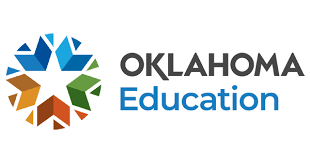
Oklahoma Virtual Charter Schools Program from the State Department of Education
Broken Virtual Academy
At Broken Arrow Virtual Academy, we go beyond traditional online learning. Our virtual school experience combines flexibility with individualized pathways designed to fit each student and family’s needs. With unique learning options, a supportive hybrid or blended model, and a focus on student success, BAVA empowers learners to thrive while giving families the freedom to choose what works best for them. Broken Arrow Virtual Academy welcomes out-of-district transfers, requires in-person assessments, and encourages students to take advantage of our on-site support.
Distance Learning
Distance learning resources for families are available from the State Board of Education.

The Oklahoma Library of Digital Resources launched in 2016 to provide Oklahoma educators with high-quality, interactive teaching resources. Oklahoma teachers have curated the digital resources, and created sample lessons, ensuring the materials are aligned to the state’s new academic standards.
Broken Arrow Hybrid Calendars
Broken Arrow Virtual Academy offers students across Oklahoma the best of both worlds—flexible online learning combined with supportive in-person opportunities. Our hybrid model empowers students to thrive academically while staying connected to teachers, peers, and resources that help them succeed. Broken Arrow Virtual Academy welcomes out-of-district transfers, requires in-person assessments, and encourages students to take advantage of our on-site support.”
Homeschooling in Oklahoma
See also Homeschooling in the Tulsa Area
Oklahoma is the only state with a constitutional provision guaranteeing the right to homeschool. Article 13, Section 4 of the Constitution of Oklahoma guarantees the homeschool exemption by stating that the legislature "shall" provide for the "compulsory attendance at some public or other school, unless other means of education are provided, of all children in the State who are sound in mind and body, between the ages of eight and sixteen, for at least three months each year."
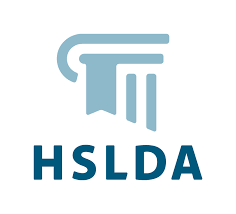
Home School Legal Defense Association works to make homeschooling possible for every family that wants to do it.
"In Oklahoma, there are no reporting and testing requirements for homeschool programs. As long as you teach for 180 days, you can legally operate a homeschool program following your own guidelines.
While there are no statutes requiring that certain subjects be taught, some Oklahoma courts have suggested that homeschool education should be equivalent or comparable to a public school education. For this reason, HSLDA strongly recommends that your homeschool curriculum include math, language arts, science, and social studies."
Home School Help > Curriculum
Broken Arrow Virtual Academy can partner with Oklahoma families who might choose to homeschool, providing a flexible hybrid model that enhances learning at home. By enrolling, parents and guardians gain access to certified teachers, proven curriculum, and valuable resources—offering both guidance and support while maintaining the freedom of a home-based education. Broken Arrow Virtual Academy welcomes out-of-district transfers, requires in-person assessments, and encourages students to take advantage of our on-site support.
![]()
A brief history of homeschooling in Oklahoma can be found in Oklahoma Historical Society's encyclopedia.
About Teaching
The Bureau of Labor Statistics' Occupational Outlook Handbook outlines required training, pay, job outlook, work environment and more:
- Preschool Teachers
- Kindergarten and Elementary School Teachers
- Middle School Teachers
- High School Teachers
- Special Education Teachers
- Teacher Assistants
Get ready for your first day as a teacher!
- Preparing For Your First Day
In addition to completing the required forms you received with your Offer Letter, there are a number of activities that you may want to complete prior to your first day with ED. - Forms to Complete Before Your First Day
- What to Bring Your First Day
Teacher Loan Forgiveness (Federal Student Aid)
Data & Statistics
- Find student demographics, educational attainment, fast facts, and more at the U.S. Department of Education.
- The National Center for Education Statistics (NCES) is the primary federal entity for collecting and analyzing data related to education.
- Condition of Education
The Condition of Education contains key indicators on all levels of education, labor force outcomes, and international comparisons. The indicators summarize important developments and trends using the latest statistics, which are updated throughout the year as new data become available. - Digest of Education Statistics
The Digest of Education Statistics contains a set of tables covering the broad field of American education from prekindergarten through graduate school. - Fast Facts
Fast Facts provide users with concise information on a range of educational issues, from early childhood to adult learning. Fast Facts draw from various published sources and are updated as new data become available. - Indicators of School Crime and Safety
Opens as pdf. - Projections of Education Statistics
The Projections of Education Statistics provides projections for key education statistics, including enrollment, graduates, teachers, and expenditures in elementary and secondary public and private schools, as well as enrollment and degrees conferred at degree-granting postsecondary institutions.
- Condition of Education
- The Nation's Report Card is the largest ongoing assessment of what U.S. students know and can do.
The Census Bureau provides information on a variety of educational topics, from educational attainment and school enrollment to school costs and financing.

English Language Arts
- From books and lesson plans to music and interactive videos, explore the American English collection from the U.S. Department of State.
- The Library of Congress offers classroom materials and professional development to help teachers use primary sources from the Library's vast digital collections.
- Living Nations, Living Worlds, U.S. Poet Laureate Joy Harjo’s signature project, shows, through poetry, that Native people and poets have vital and unequivocal roots in the United States. The digital project features an ArcGIS StoryMap, which integrates an interactive national map of 47 contemporary Native poets, and connects to a newly developed Library of Congress audio collection featuring the participating poets reading and discussing their original poems.
- Poetry 180 is designed to make it easy for students to hear or read a poem on each of the 180 days of the school year.
- Explore digitized rare gems in the Library of Congress' Rare Book & Special Collections.
- Find resources and opportunities to celebrate the wonder of reading at Read.gov. This service from the Library of Congress promotes books and libraries, literacy and reading, and poetry and literature.
- Use Statistics in Schools to explore census data English language activities on topics such as young adulthood, college education, and population changes to teach students how to explain, evaluate, infer, persuade, compare, and more.
Fine Arts
- EDSITEment offers free resources for teachers, students, and parents searching for high-quality K-12 humanities education materials in the subject areas of history and social studies, literature and language arts, foreign languages, arts, and culture.
- Art has always been an important feature of federal architecture, making the U.S. General Services Administration (GSA) one of the primary stewards and largest patrons of public art in America. Thousands of historical and contemporary artworks are displayed and maintained as part of the Fine Arts Collection chronicle the rich and complex history of the United States, enhance the experiences of citizens interacting with their government, and constitute an enduring and irreplaceable cultural legacy for the nation.
- The National Gallery of Art has a variety of resources and programs to teachers to foster understanding and a lifelong connection to art.
- The Oklahoma Arts Council offers online fine arts curriculum to ensure students across our state have access to arts education.
- With the Smithsonian Learning Lab, teachers have access to millions of digital resources from across the Smithsonian's museums, research centers, libraries, archives, and more.
- The historic Treasury Collection represents one of the oldest and most intact collections of fine and decorative arts, furniture and architectural fragments in the Executive branch of the United States government.
Health Education
- Environmental Health Science Education is an education outreach tool of the National Institute of Environmental Health Sciences (NIEHS), providing resources and classroom materials to educators. You can also find fun and educational materials related to health, science, and the environment on the agency's Kids page.
- Find an array of environmental, health, and science-based lesson plans, activities, and ideas from the Environmental Protection Agency.
- The FDA has resources on the importance of good nutrition.
- The Health Educator’s Nutrition Toolkit is designed to help health educators teach students about the Nutrition Facts label, and how to use the information it provides to make healthier food choices.
- Learn about everything from how the body works to what happens when you go to the hospital. MedlinePlus Children's Health includes quizzes, games, and more.
- Help your students make every bite count with the USDA's MyPlate.
- NIH curriculum supplements are teacher’s guides to two weeks of lessons on the science behind selected health topics.
- Teach children the importance of nutrition, and physical activity using interactive websites and games from Nutrition.gov's Kids Corner.
- Help your students learn their rights on the job, and to expect a safe workplace. Occupational Safety and Health Administration (OSHA) can help prevent job-related injuries and illnesses.
- Science and Our Food Supply is a free supplementary curriculum for middle level and high school classrooms.
Mathematics
- Bring the Bureau of Labor Statistics into your classroom with these resources for teachers.
- Charts are a great way of visualizing and comparing data, and you can make your own in minutes using Chart Maker from the Bureau of Labor Statistics
- Communicate information visually with Create a Graph from the National Center for Education Statistics.
- With Space Math @ NASA, you will find hundreds of math problems related to all of the major astronomical objects from asteroids and planets to galaxies and black holes!
- Statistics in Schools brings school subjects to life using real-world Census Bureau statistics to create materials for use year after year for K-12 students. Through topics such as family structures, immigration, and the value of education, show students how they can apply math and statistics to make real-life decisions and identify important changes in their community and country.
Online resources for lesson plans
ABC-CLIO Resources
Our five ABC-CLIO resources, which include the African American Experience, American Indian Experience, Daily Life Through History, Pop Culture Universe and the Latino American Experience, provide classroom-ready content in the form of Activities and Topic Libraries.
Activities include inquiry questions, worksheets and links to relevant resources. Topic Libraries contain reference articles, timelines, biographies, glossary terms, photos and illustrations, maps and more to use in lessons or assignments.
How to use: access the African American Experience, American Indian Experience, Daily Life Through History, Pop Culture Universe and the Latino American Experience, then click on Advanced Search below the search bar. From there, you can select Topics and Activities and then click search to view content.
If you have Clever, ClassLink or Bloomsbury login, use your credentials to access the Educator Support Site.
Access World News
This online resource offers lesson plans that are a great resource for teachers, homeschool families,and independent learners. With nearly 5,000 lessons covering topics like history, health, science, and more, it’s easy to spark meaningful discussions and support learning at school, home, or on the go.
How to use: Open Access World News, then click Headlines and Lesson Plans on the right and then View All Lesson Plans.
Personal Financial Literacy
- Find activities to help teach and nurture the building blocks of financial capability across the curriculum from the Consumer Financial Protection Bureau.
- Consumer information from the FTC is a resource for teaching about everyday financial issues.
- Econ Ed at the St. Louis Fed includes free economics and personal finance lessons, activities, and readings provide flexibility and real-world connections.
- This Great Depression curriculum from the Federal Reserve Bank of St. Louis was designed to provide teachers with economic lessons they can share with their students to help them understand this significant experience in U.S. history.
- Misadventures in Money Management is a cutting edge, graphic novel where you can choose your own adventure in a virtual learning experience that trains future and current servicemembers and their families on how to navigate future financial landmines in a fun and interactive way.
- The FDIC's Money Smart for Young People series consists of curriculum products with age-appropriate lesson plans for educators.
- The Occupational Outlook Handbook (OOH) is an online publication with information on hundreds of occupations in the United States. The OOH is a rich resource for those seeking career guidance.
- Resources for Classrooms from the Securities and Exchange Commission includes tools and resources for educators.
- $martPath is an engaging, interactive and easy-to-use way for elementary school teachers to embed relevant and fun economic and financial education in their classrooms. The Oklahoma Council on Economic Education also has Curriculum & Resources materials.
- Teacher Online Resource Center is a joint project from the Federal Deposit Insurance Corporation (FDIC) and the Consumer Financial Protection Bureau (CFPB) providing tools to help teach financial education including lesson plans, videos, and other resources.
- Federal Reserve Tools for Teaching with FRED (Federal Reserve Economic Data) incorporates tutorials, instructional guides, lesson plans and activities.
- The U.S. Currency Education Program offers a wide range of educational and training resources.
- The U.S. Mint provides resources for grades K-12.
Physical Education
- To learn more about benefits of physical activity, physical activity behaviors of young people, and recommendations, visit CDC Healthy Schools.
- The Physical Activity Guidelines for Americans provides evidence-based guidance to help Americans maintain or improve their health through physical activity.
- Learn about the components that should be part of your fitness education and assessment process. The Presidential Youth Fitness Program has resources to help you conduct fitness assessments to promote your student’s health.
- SNAP-Ed program resources teach important physical activity concepts.
- We Can! (Ways to Enhance Children's Activity & Nutrition) is a national movement designed to help children stay at a healthy weight.
Science
- AirNow is your one-stop source for air quality data.
- Bureau of Land Management education programs and materials help teachers and students understand resource areas, multiple-use land management, and how citizens can affect land use decisions.
- The Bureau of Ocean Energy Management's Environmental Studies Program has a variety of materials for encouraging ocean literacy, and marine science studies.
- Digital Atlas of Ancient Life is a digitization project funded by the National Science Foundation. It has developed a number of exercises and activities for classroom use, arranged by grade level.
- Find energy related stories, hands-on activities, and research articles for your classroom at EnergyKids. These curriculum-based lessons are separated by age-grade.
- Find an array of environmental and science based lesson plans, activities and ideas from the Environmental Protection Agency.
- Everyday Mysteries will introduce students to the Library of Congress' rich collections in science and technology.
- Experience science at home with Fermilab, America's particle physics and accelerator laboratory. Fermilab offers a wide variety of educational resources.
- Global Positioning System (GPS) technology is in everything from cell phones and wristwatches to bulldozers, shipping containers, and ATM's. This curriculum uses GPS concepts, and applications to stimulate student interest in science, technology, engineering, and mathematics (STEM).
- Enhance your students' scientific journey with GLOBE's teaching resources. Through Earth System Science posters, learning activities, and various other educational tools, our resources will help you engage your class in a collaborative approach to scientific exploration of the world around them.
- The Mesonet, "Oklahoma's Weather Network", has partnered with teachers since 1992 via the EarthStorm program to increase the use of weather and climate in classroom science curriculum.
- MIT Open Learning Library offers free online courses with interactive content.
- At NASA Kids Club, you will find games of various skill levels for children pre-K through grade 4. These games support national education standards in STEM -- science, technology, engineering and mathematics. The agency also provides STEM resources for educators.
- The National Library of Medicine Exhibition Program creates lively and informative exhibitions and educational resources on a variety of topics in the history of medicine.
- Americans’ health, security, and economic well-being are closely linked to climate and weather, and there are many ways to approach climate and energy depending on the grade level, course topics and instructional method. National Oceanic and Atmospheric Administration educational resources can help.
- National Parks are America's largest classrooms. National Park Service educator resources includes lesson plans, primary sources, and more about these great places.
- National Science Foundation has a diverse collection of lessons and web resources for educators and their students
- The National Weather Service Teacher Resources can help with weather basics, severe weather, the sun or space weather, and many other topics.
- Produced by the USDA Forest Service, the Natural Inquirer program produces a variety of science education materials for PreK through grade 12.
- The Office of Energy Efficiency and Renewable Energy supports research and development of energy efficiency and renewable energy technologies to strengthen U.S. economic growth, energy security, and environmental quality.
- Oklahoma Ag in the Classroom lessons include hands-on fun, making use of a subject and a substance that is very familiar and dear to most students - food!
- Explore curriculum and resources available from the Smithsonian Science Education Center.
- Think you know the real CIA? Secret gadgets, sneaking around in trench coats, danger around every corner? There's a little of that, but the real CIA is more complex, and interesting than you can imagine. Find out more at Spy Kids.
- DOE STEM, a project of the Office of Public Affairs, highlights all of the ways the Energy Department supports science education and workforce development.
- Tulsa Rock & Mineral Society has curated and built curriculum and rock display boxes for use by area school libraries. TRMS members are also available as guest speakers.
- Explore educational resources from the U.S. Botanic Garden.
- The USDA offers resources for educators and students that supplement and enhance existing curricula in science and the social sciences.
- The U.S. Energy Atlas is a comprehensive reference for data and interactive maps of energy infrastructure and resources in the United States.
- The U.S. Fish and Wildlife Service has many resources, lesson plans, and student activity guides ready for classroom use.
- Tap into over 140 years of USGS research in the natural sciences in the form of lesson plans and activities, maps, podcasts, online lectures, videos and animations, and much more. There are thousands of ideas for using these resources in elementary, secondary, university, and informal education settings.
- The United States Patent and Trademark Office (USPTO) helps students get excited and energized about their education by relating what they learn in school to their lives and future careers.
Skills-building lessons and practice (K-8)
Help your elemenary and middle school students improve their math, reading comprehension, writing and grammar, social studies, and vocabulary skills through printable and digital content.
How to use: Access LearningExpress Library and then click Grades 4-8 Educator Resources within the Academic Skills and Test Preparation section.
Social Studies
Government
- America's Founding Documents, known collectively as the Charters of Freedom, have secured the rights of the American people for more than two and a quarter centuries, and are considered instrumental to the founding and philosophy of the United States.
- Ben's Guide to the U.S. Government, a service of the Government Publishing Office (GPO), is designed to inform students, parents, and educators about the Federal Government.
- By the People provides students of all ages with opportunities to explore and engage with unique historical documents from the collections of the Library of Congress.
- With the Citizenship Resource Center, educators will find several resources for the classroom on U.S. history, civics, and the naturalization process.
- EDSITEment offers free resources for teachers, students, and parents searching for high-quality K-12 humanities education materials in the subject areas of history and social studies, literature and language arts, foreign languages, arts, and culture.
- This Great Depression curriculum from the Federal Reserve Bank of St. Louis was designed to provide teachers with economic lessons they can share with their students to help them understand this significant experience in U.S. history.
- In KidCitizen’s interactive episodes, children explore civics and government concepts by investigating primary source photographs from the Library of Congress.
- Kids in the House is provided by the Office of the Clerk of the U.S. House of Representatives with the mission to provide educational and entertaining information about the legislative branch of the United States Government to students of all ages.
- Explore the Oklahoma History Center teacher's resource guides, which correlate with Oklahoma Academic Standards for Social Studies.
- Learn art, history, and culture with The Smithsonian, the world’s largest museum, education, and research complex.
- Whether visiting the Capitol in person or teaching in the classroom, a range of activities, resources, and learning opportunities are available from the U.S. Capital Visitor's Center.
- Find realistic simulations, and memorable, interactive approaches to court basics that include comparing federal and state courts with US Courts Educational Resources.
- Have a question about the USA? Find answers to the most requested facts about the United States of America at USA.gov.
- Milestone Documents is a list compiled by the National Archives and Records Administration, and drawn primarily from its nationwide holdings. The documents chronicle United States history from 1776 to 1965.
History & Culture
- America's Story is for you and your family to participate in these activities, inspired by the collections, programs, and expertise of the Library of Congress.
- Use Chronicling America to search America's historic newspaper pages from 1777-1963 or use the U.S. Newspaper Directory to find information about American newspapers published between 1690-present.
- The Library of Congress offers classroom materials and professional development to help teachers effectively use primary sources from the Library's vast digital collections.
- Teach with documents using DocsTeach from the National Archives. Locate teachable primary sources, find new lessons, and create your own online or print activities for your students.
- Founders Online includes correspondence, and other writings of seven major shapers of the United States: George Washington, Benjamin Franklin, John Adams (and family), Thomas Jefferson, Alexander Hamilton, John Jay, and James Madison.
- History Explorer is the National Museum of American History's online resource for teachers.
- The Department of Energy traces its origins to World War II, and the Manhattan Project effort to build the first atomic bomb.
- National Archives has many resources for educators teaching remotely and homeschooling parents.
- National Parks are America's largest classrooms. National Park Service educator resources includes lesson plans, primary sources, and more about these great places.
- Native Knowledge 360° (NK360°) provides educational materials, virtual student programs, and teacher training that incorporate Native narratives, more comprehensive histories, and accurate information to enlighten and inform teaching and learning about Native America.
- The Peace Corps' Educator Resources program fosters an understanding of other cultures and global issues by providing online educational resources based on the Peace Corps experience and facilitating communication among U.S. learners and current and returned Peace Corps Volunteers.
- Learning about the War of 1812 is fun for all ages with these games from the National Parks Service.
- Presidential Libraries and Museums present vast archives of documents, museums full of important Presidential artifacts, interesting educational and public programs, and informative web sites
- ShareAmerica is the U.S. Department of State’s platform for sharing stories, and images on important topics like democracy, freedom of expression, innovation, entrepreneurship, education, and the role of civil society.
- Using Statistics in Schools to explore Census data can give students a deeper understanding of historic events like the Missouri Compromise and social studies topics like women in the workforce.
- Story Maps at the Library of Congress are immersive web applications that tell the incredible stories of the Library’s collections through narrative, multimedia, and interactive maps.
- Teaching with Historic Places offers a series of more than 160 classroom-ready lesson plans that use historic sites as a means for exploring American history. Lessons can be browsed by theme, time period, state, and curriculum standards.
- View the complete collection of U.S. Army Center of Military History publications in their online catalog.
Geography
- Statistics in Schools can take students on a data-driven, cross-country scavenger hunt or engage them in the discovery of census data that highlights geography's impact on communities and lives.
- Tap into over 140 years of USGS research in the natural sciences in the form of lesson plans and activities, maps, podcasts, online lectures, videos and animations, and much more.
- The World Factbook provides basic intelligence on the history, people, government, economy, energy, geography, communications, transportation, military, terrorism, and transnational issues for 266 world entities.
Oklahoma History
- Crossroads is a different kind of storytelling from the Oklahoma Historical Society. Each issue explores a chapter in the history of our state.
- Use Documents.OK.Gov to access thousands of state government publications and documents that were available only through official Oklahoma state agency websites beginning in November 2006. Digitized versions of other selected state print publications dating back to 1978 are also available.
- From Indian heritage and Viking explorers to land runs and oil booms, Oklahoma has a history unlike any other state. Historical sites throughout the State honor Oklahoma's original residents, settlers and a wide variety of history making people and events. Find out more from Oklahoma Department of Tourism's History & Historical Sites.
- The Oklahoma Department of Libraries offers Resources for K-12 Students.
- Muscogee (Creek) Nation History
- National Parks Service sites in Oklahoma
- Oklahoma Digital Prairie provides visitors unique digital content spanning more than 100 years of rich, vibrant history from the 46th State.
- Oklahoma: Selected Library of Congress Primary Sources The Library of Congress offers classroom materials and professional development to help teachers effectively use primary sources from the Library's vast digital collections in their teaching.
- Oklahoma State Symbols
- Oklahoma Statehood Bill (January 20, 1906)
- Housed in the historical records of the U.S. House of Representatives and the United States Senate at the Center for Legislative Archives are many documents that illuminate Congress's role in Oklahoma's Statehood process on November 16, 1907.
- 1921 Tulsa Race Riot/Massacre
The John Hope Franklin Center for Reconciliation has a Curriculum Resource page designed to provide educators with material that will cover the 1921 Race Riot/Massacre, Black Wall Street, and the people and places of the Historic Greenwood District.
Resources for lesson plans
ABC-CLIO Resources
Our five ABC-CLIO resources, which include the African American Experience, American Indian Experience, Daily Life Through History, Pop Culture Universe and the Latino American Experience, provide classroom-ready content in the form of Activities and Topic Libraries.
Activities include inquiry questions, worksheets and links to relevant resources. Topic Libraries contain reference articles, timelines, biographies, glossary terms, photos and illustrations, maps and more to use in lessons or assignments.
How to use: access the African American Experience, American Indian Experience, Daily Life Through History, Pop Culture Universe and the Latino American Experience, then click on Advanced Search below the search bar. From there, you can select Topics and Activities and then click search to view content.
If you have Clever, ClassLink or Bloomsbury login, use your credentials to access the Educator Support Site.
Access World News
This online resource offers lesson plans that are a great resource for teachers, homeschool families,and independent learners. With nearly 5,000 lessons covering topics like history, health, science, and more, it’s easy to spark meaningful discussions and support learning at school, home, or on the go.
How to use: Open Access World News, then click Headlines and Lesson Plans on the right and then View All Lesson Plans.
Skills-building lessons and practice (K-8)
Help your elemenary and middle school students improve their math, reading comprehension, writing and grammar, social studies, and vocabulary skills through printable and digital content.
How to use: Access LearningExpress Library and then click Grades 4-8 Educator Resources within the Academic Skills and Test Preparation section.

